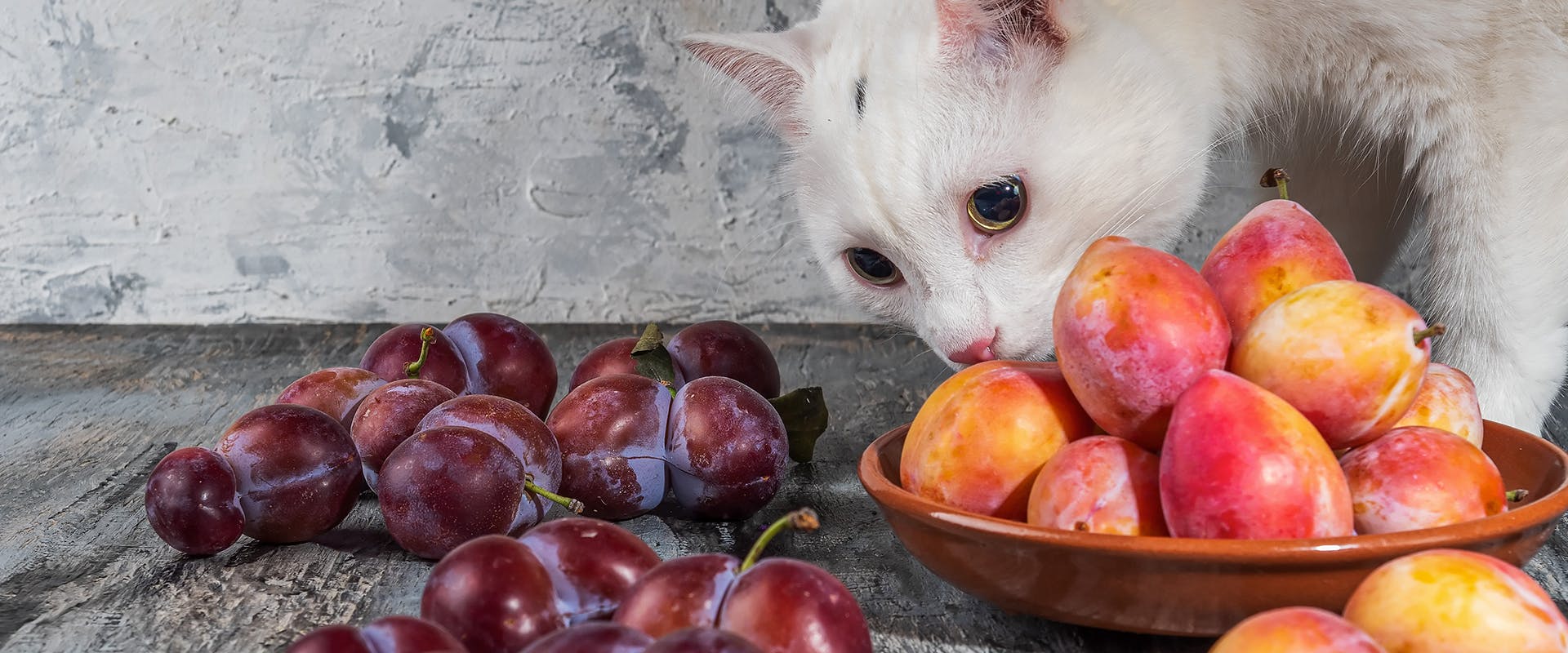No, cats should not eat apricots as the stems, leaves, and pits can be toxic. While the flesh of apricots is safe for cats, it is important to remove these parts before feeding them to your furry friend.
Many fruits we consume regularly, such as cherries, plums, and peaches, can be toxic to animals. They know what foods are safe for your pet to prevent potential harm.
The Safety Of Cats Eating Apricots
Apricots can poison cats by consuming stems, leaves, and seeds. While the flesh of apricots is safe, removing any potentially harmful parts before feeding them to your feline companion is important.

Credit: www.hepper.com
Other Fruits To Avoid Feeding Cats
While it’s important to know whether cats can eat apricots, it’s equally important to be aware of other fruits that can harm our feline friends. Some fruits that are safe for humans can be toxic to cats, causing digestive issues and even organ failure. To keep your furry companion safe, it’s best to avoid feeding them the following fruits:
Grapes And Raisins
Grapes and raisins may seem harmless, but they can spell trouble for cats. These fruits contain toxins that can cause kidney failure in felines, even in small amounts. It’s best never to offer your cat grapes or raisins; if they accidentally ingest any, seeking immediate veterinary attention is crucial.
Citrus Fruits
Citrus fruits like oranges, grapefruits, lemons, and limes are also on the list of fruits to avoid feeding cats. While not as toxic as grapes or raisins, citrus fruits can cause stomach upset in cats. Their acidic nature can irritate their digestive system, leading to vomiting and diarrhea. Keeping citrus fruits away from your feline friend’s reach is best to prevent unwanted gastrointestinal issues.
How To Safely Feed Apricots To Cats
Apricots, specifically the stems, leaves, and pits, can be toxic to cats. It’s important to remove these parts before feeding apricots to your cat. Always prioritize your cat’s safety and consult a veterinarian for any concerns.
Feeding apricots to your feline friend can be a tasty and healthy treat, but it’s important to do so with caution. While apricots are safe for cats to consume, certain parts of the fruit can be toxic. In this section, we will discuss how to safely feed apricots to cats, ensuring their well-being and enjoyment.
Removing Toxic Parts
When feeding apricots to cats, it’s crucial to remove any toxic parts before offering the fruit to them. The stems, leaves, and pits of apricots contain cyanide, a potent toxin that can cause serious health issues and even be fatal to cats if ingested.
To ensure your furry companion’s safety, remove the apricot’s stems and leaves before giving it to them. The pit or seed should also be discarded, as it contains a small amount of cyanide. By taking these precautions, you can protect your cat from potential poisoning.
Moderation And Portion Control
While apricots can be healthy and delicious cat treats, moderation and portion control are important. Like any other food, overindulging in apricots can lead to digestive issues or an upset stomach for your furry friend.
When feeding your cat apricots, offer small and controlled portions. This ensures that the cat can enjoy the fruit without adverse health effects. Additionally, it’s advisable to introduce apricots gradually into the cat’s diet to assess their tolerance and prevent any unexpected reactions.
Consulting A Veterinarian
If you have any concerns or doubts about feeding apricots to your cat, it’s always best to consult a veterinarian. They can provide personalized advice based on your cat’s dietary needs and health conditions.
A veterinarian can guide you on the appropriate portion sizes, feeding frequency, and other considerations to ensure your cat’s well-being. They can also address any questions or concerns regarding the safety and suitability of apricots for your furry companion.
In conclusion, while apricots are safe for cats to eat, removing the toxic parts is crucial, practicing moderation and portion control and consulting a veterinarian if needed. By following these guidelines, you can safely and responsibly feed apricots to your feline friend, offering them a delicious and healthy treat.

Credit: wagwalking.com

Credit: www.trustedhousesitters.com
Frequently Asked Questions On Can Cats Eat Apricots
Can Cats Eat Peaches And Apricots?
Cats can eat peaches and apricots but should avoid the stems, leaves, and seeds, as these can poison them. Removing these parts before feeding them to your cat is important, and it is also advisable to feed these fruits to your cat in moderation.
Are Apricots Toxic To Pets?
Apricots can be toxic to pets, including cats. The stems, leaves, and seeds contain cyanide, poisonous to cats. It is important to remove these parts before feeding apricots to your cat. However, when consumed in moderation, apricots can have some health benefits for cats.
What Fruits Can Cats Not Eat?
Cats should not eat apricot stems, leaves, or seeds as they can be poisonous. Other fruits like grapes, raisins, and citrus should also be avoided as they can cause kidney disease and stomach upset in cats.
Can Animals Eat Apricots?
Animals can eat apricots if they don’t consume the stems, leaves, or pits. These parts of the apricot contain cyanide and can be poisonous to animals. However, the flesh of the apricot is safe for animals to eat.
Conclusion
Apricots can be a delicious and healthy treat for cats if consumed in moderation and the stems, leaves, and pits are removed. These parts of the apricot contain cyanide, which can be toxic to cats. However, the flesh of the apricot is safe for cats and can provide them with a few health benefits.
When feeding your furry friend fruits, it’s important to be cautious and avoid any potentially harmful parts. So, feel free to share a small amount of apricot with your feline friend, but always remember to remove the stems, leaves, and pits beforehand.

